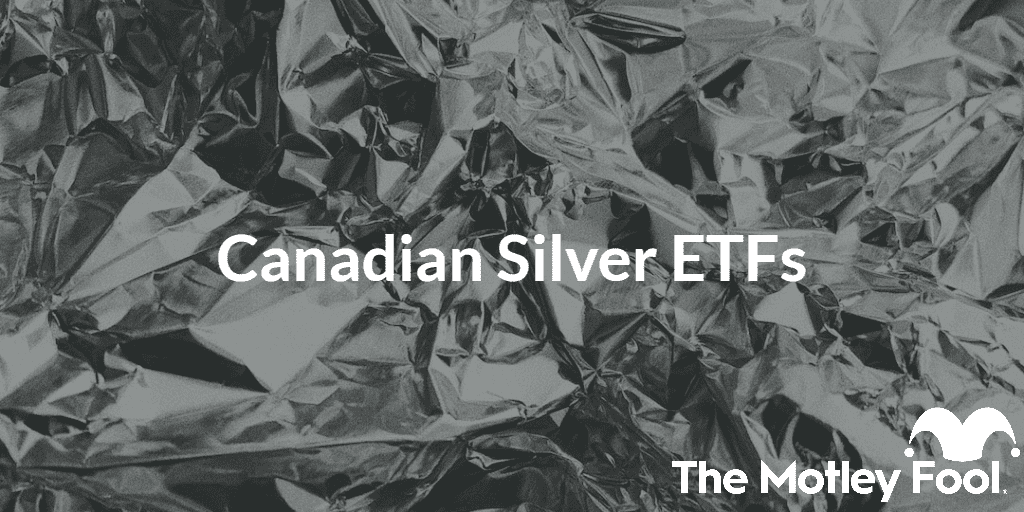To gain exposure to silver, investors often buy physical bullion such as coins or bars, or certificates of ownership.
However, there is another way to own silver – via the use of a silver exchange-traded fund (ETF). This approach allows investors to gain silver exposure in a tax-free savings account or registered retirement savings plan for additional tax efficiency.
If you’re looking to learn all there is to know about silver ETFs, this article is for you.
What is a silver ETF?
A silver ETF is basically a fund that holds an underlying “basket” of silver. The “exchange-traded” aspect of silver ETFs means that their shares trade throughout the day on exchanges, like stocks do with their own ticker symbol.
As a product, silver ETFs have some unique features that new investors should understand:
- Holdings: Silver ETFs can gain exposure to the price of silver in two ways: physically via audited vaults of actual bullion, or synthetically via silver futures contracts. The former tends to have lower costs and track the spot, or actual price, of silver better.
- Currency hedging: The price of silver is tracked in U.S. dollars (USD), while Canadian silver ETFs are priced in Canadian dollars (CAD). Therefore, fluctuations in the USD/CAD exchange rate can add additional volatility for non-currency hedged silver ETFs. Currency hedged silver ETFs use derivatives called forwards to mitigate this risk at an extra cost.
Finally, like all ETFs silver ETFs charge fees to their investors. These fees include the fund manager’s management fees and any operational, administrative, and marketing expenses. These are combined to form the ETF’s management expense ratio, or MER.
The MER is expressed as a percentage fee deducted from your total investment on an annual basis. For example, someone who invests $10,000 in a silver ETF with a 0.50% MER can expect to pay $50 in annual fees. Keeping this as low as possible is always a good idea.
Top silver ETFs in Canada
The following Canadian-listed ETFs provide exposure to silver, either via physically backed bullion or synthetic exposure, using futures contracts.
| Silver ETF | Inception date | Highlights |
| Sprott Physical Silver Trust (TSX:PSLV) | 2010-10-27 | Holds fully allocated and redeemable silver bullion in the Royal Canadian Mint |
| iShares Silver Bullion ETF (TSE:SVR) | 2009-07-15 | Provides exposure to silver prices hedged to CAD by holding bullion. |
| Horizons Silver ETF (TSX:HUZ) | 2009-06-24 | Tracks the Solactive Silver Front Month MD Rolling Futures Index ER. |
Sprott Physical Silver Trust (TSX: PSLV)
PSLV is technically a close-ended trust and not a true ETF. This means that depending on supply and demand, PSLV’s share price can occasionally trade at a discount or premium to its net asset value, or NAV.1 That being said, PSLV trades like any other ETF on exchanges with high liquidity. The trust holds fully allocated silver bullion with the Royal Canadian mint, which investors can redeem shares for in sufficient amounts.
iShares Silver Bullion ETF (TSX: SVR)
SVR offers investors exposure to 77.95 tonnes, or 2,506,124 ounces, of silver bullion in trust as of February 24, 2023. The ETF is currency hedged, and also offers a non-currency hedged version (SVR.C).
Horizons Silver ETF (TSX: HUZ)
HUZ provides investors with synthetic exposure to silver via futures contracts. The ETF tracks the Solactive Silver Front Month MD Rolling Futures Index. In addition, HUZ is currency hedged.
Pros of investing in silver ETFs
Silver ETFs may be a good addition to an investment portfolio due to the following:
- Tax efficiency: Unlike physical silver bullion, silver ETFs can be held in a TFSA or RRSP.
- Liquidity: Silver ETFs are much easier to sell compared to bullion.
- Cost: The MER charged by silver ETFs can be less than storage and insurance costs for bullion.
Cons of investing in silver ETFs
That being said, there are a few reasons why silver ETFs may not be ideal for all investors:
- Unreliable inflation hedging powers: Academic studies have cast doubts on silver’s actual power as a long-term inflation-fighting asset.2
- Diversification: While silver has a weak correlation to stocks and bonds, it isn’t as weak as gold, which tends to make the latter better for diversification.3
- Volatility: Historically, the daily price of silver has been two to three times greater than gold.4
Are silver ETFs right for you?
Silver ETFs should be considered an advanced investment best suited for high-risk tolerance investors with specific goals. If you’re wiling to accept high volatility, then a silver ETF could be a good way to speculate on the price of silver. If you’re planning to hold silver long term and looking for a tax-efficient and liquid way to invest, then silver ETFs might be a suitable alternative to bullion. Keep in mind that silver ETFs tend to have higher MERs than regular stock and bond index ETFs.
If you want to check out other ways to invest in silver, consider reading our Guide to Investing in Canadian Silver Stocks.
